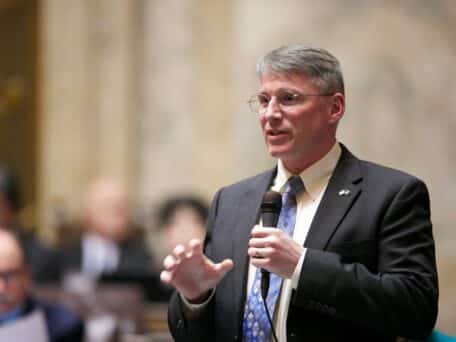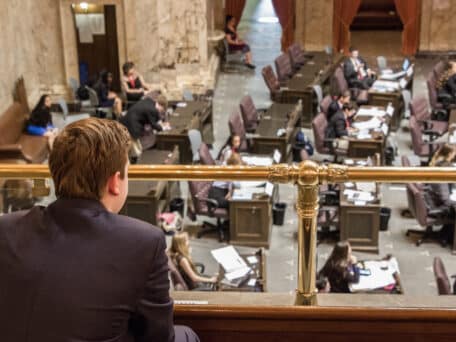In a move that fits perfectly into the mold of irrelevance that has defined his so-called “leadership” of Washington State, Jay Inslee did not act on voter-approved pubic charter schools. Instead, our green governor allowed the bill that lawmakers passed to save charter schools to become law without his signature.
No governor has opted to allow a bill to become law without their signature since 1981.
Inslee said of his decision, “Despite my deep reservations about the weakness of the taxpayer accountability provisions, I will not close schools.” In other words, he would not support public charter schools either.
In a battle between the public’s will to save voter-approved charter schools and the Washington Education Association’s (WEA) war against public charter schools, Inslee chose to do nothing.
It is a weak leader’s way out of not taking a stance on an issue that is critical to the future of our state.
Democrat State Rep. Larry Springer, who supported the bill to save charter school, said that he believed Inslee “probably took the best path he could, politically, with most Democrats against the bill, along with many parents and the powerful teachers union.”
The statement was Springer’s way of defending Inslee’s non-action. But, likely inadvertently, it exposed the core problem of our green governor’s entire gubernatorial term thus far.
Inslee’s non-action was political maneuvering.
When Inslee reviewed the prospect of thousands of children (most of whom are unprivileged) losing their schools, he saw a partisan issue. And, when Inslee contemplated the choice of whether or not to shutdown schools that have a proven track record of improving test scores for underprivileged children, he viewed the decision as a political game that he must (some way or another) win.
Hyper-partisan political maneuvering has defined Inslee’s “leadership” of our state thus far. Time and time again, our green governor worked to prove his loyalty to his special interests campaign supporters. Whenever possible, Inslee moved to support the agenda of special interests.
The same cannot be said of Inslee’s commitment to what is best for Washingtonians. In fact, our green governor has a proven record of choosing special interests over working families.
And, should public opinion and potential electoral backlash block his path to supporting the agenda of special interest, Inslee has simply chosen not act. Inslee’s refusal to take a stance on public charter schools follows this pattern of weak “leadership,” especially when it comes to improving education in our state.
During the 2014 elections, WEA pushed Initiative 1351, the so-called class size initiative. Simply put, the initiative was a money-grab disguised as a smaller-class size measure. Though the initiative threatened to cost state taxpayers $4.7 billion and carried no funding mechanism, Inslee refused to publicly state his position on the issue.
It was only on election night (after it was too late to make a difference either way) that Inslee finally made it clear to the public that he did not, in fact, support I-1351.
Inslee’s failure to take a stance on I-1351—despite all its negatives—was not a surprise. Just like it is not a surprise that Inslee did not sign the bill to save charter schools.
The WEA donated $1 million to Inslee’s gubernatorial bid and, as we all know, he needs its financial support in 2016. In the end, it’s not about doing what’s best for working families for Inslee. Rather, it’s about giving his donors a substantial return on their investments in his political fortunes.




